Training with the TVLB on a Lovely Evening in Tynemouth
By Luan Hanratty
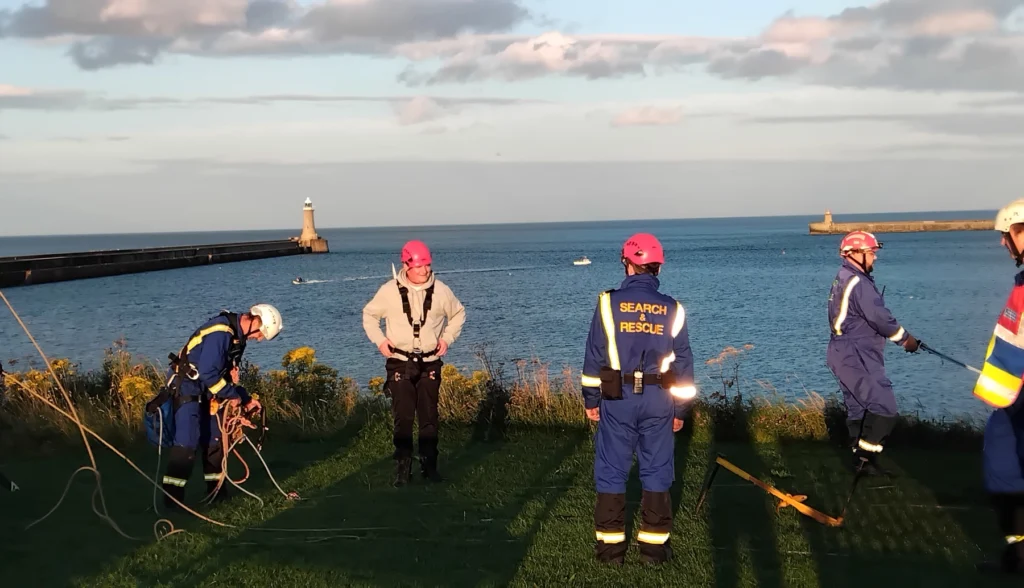
Do you remember a programme in the 1980s called ‘Duncan Dares’? In the show, Blue Peter presenter, Peter Duncan, would find himself enduring all sorts of self-imposed scrapes in the name of entertainment. That’s what it felt like for me as I was being lowered down a cliff towards the rocks beneath the Spanish Battery. Nevertheless, I remained rather excited through the adventure, which was both fun and educational and served as a hands-on demonstration of the often life-and-death work of the Brigade.
I was handed a pair of steel-toecapped boots and a helmet. Then Brigade Captain Jonny Peters and Captain & Brigade Secretary Peter Lilley explained how the drill would work. First, the team hammered four huge iron stakes into the ground. These would be the anchor points that would take the weight of both myself and Brigade Captain David Steven, who was heading down the cliff with me.
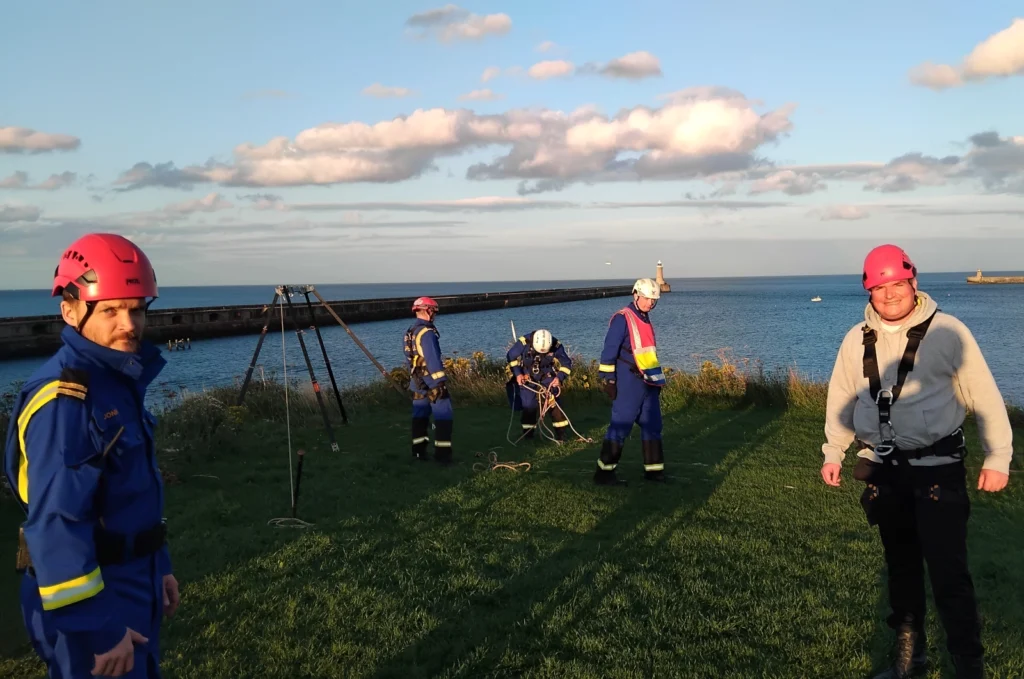
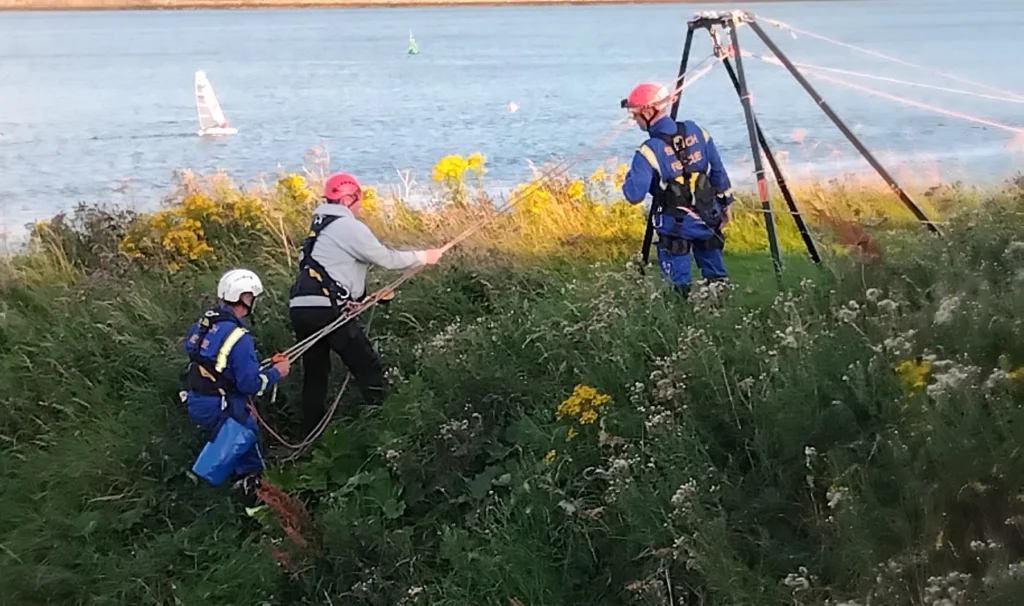
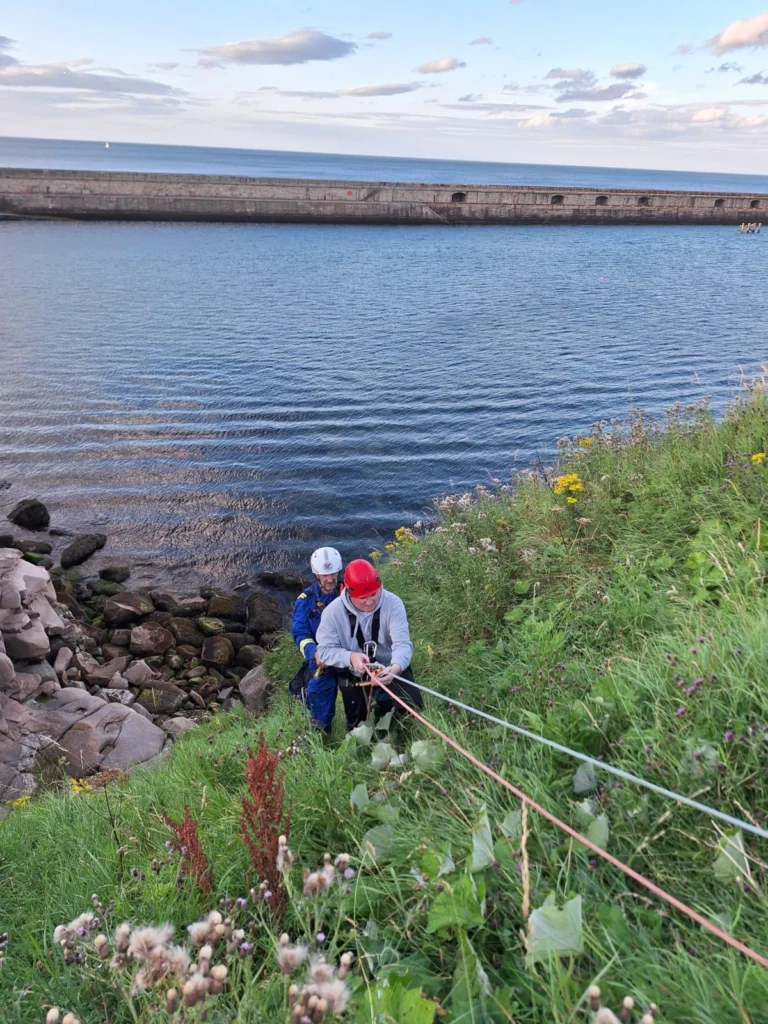
The ropes were sorted and fastened, and a frame they called an ‘obelisk’ was erected to keep the lines clear of potential snags or sharp edges. Peter told me that in a callout they could get all this ready in 5 minutes, an impressive feat in itself. He also explained how before a rescue has even started, they may have to make use of various solid fixtures or pieces of street furniture as anchor points, and that this required challenging assessments as to whether such points could take the strain involved. I was told our rig could easily handle 30-stone in weight, which was reassuring to hear.
Being slowly lowered backwards down a cliff is a very counterintuitive experience. As much as I knew I had to fully trust the setup and lean right back, my mind kept flitting to how unnatural this was and I constantly had to override my instinct to scramble down the precipice.
However, I had scaled these cliffs as a kid and although undoubtedly dangerous, they’re not super high and so I knew it wouldn’t be a long journey downwards. So getting down was a fairly routine matter. Getting up, though, despite being supposedly easier, was a little hairier. At one point I slipped and faceplanted on the long grass that covers the cliff. Altogether, I couldn’t say I handled the ascent well. After a pause halfway up, where I just wanted it to be over with, I tried to invoke a spirit of zen to counter the urge to panic and to stop me hyperventilating. But soon enough, I reached the summit, shaken not stirred, and cracked a rictus grin for the onlookers and the camera.
It’s fortunate that we don’t have very high cliffs on our coastline, with the exception of Penbal Crag, which is generally inaccessible to the public. But south of the Tyne, from Trow Rocks to Marsden, you have far higher drops and the South Shields Brigade, based directly opposite the TVLB, have to deal with a lot more incidents involving serious injury, suicide and would-be suicides. You can imagine the challenges faced by teams at places like Flamborough Head, where the soft chalk cliffs are hundreds of feet high…
After I was hauled to the top, it was my turn to do the hauling and that proved to be a real workout for my arms. When you’re in the harness, you forget that there are people at the other end pulling your weight, and the Brigade have eschewed diesel winches and such like, as there’s no substitute for getting someone safe with the tried-and-tested rope rescue method. It is a skill that still needs to be known, especially if and when the technology we rely on so much, invariably fails.
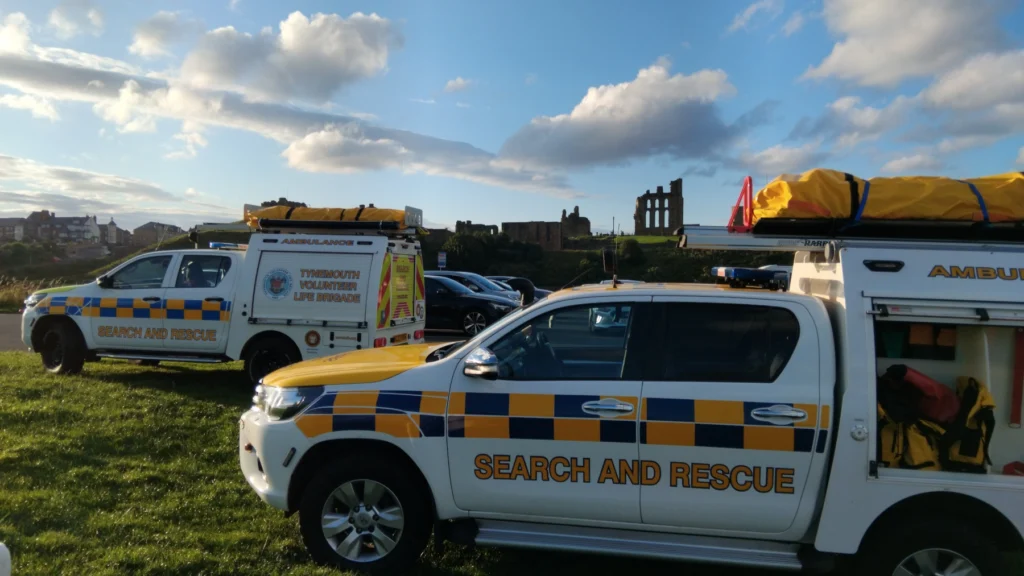
A Varied Role
There are 5 aspects to the TVLB training: cliff rescue, water rescue, search & rescue, officer in charge, and first aid. In addition, members need to know all about equipment and vehicle maintenance.
Training sessions see the members integrate with the life brigades of South Shields, as well as with the Blyth & Newbiggin Coastguard teams. Crucially, they also need to train with the RNLI crews, in particular with Tynemouth Lifeboat based at the Fish Quay.
Despite their key role as an emergency service, the TVLB are something of an anomaly today. Just as there are only a handful independent lifeboat institutions left in Britain, there are only a couple of shore rescue brigades remaining. The nationwide network that began at Tynemouth in December 1864, have eventually, brigade by brigade, come under the Coastguard Rescue Service, and thus members elsewhere became state employees. By contrast, the TVLB chose to retain their independence, given their unique and proud history as the first of their kind. This means that TVLB members make great sacrifices to serve our community.
As volunteers, members typically have full time jobs to balance with their duties. If they are called out to a rescue, which they have to expect at the most unsociable times, they might be scouring the bays all night looking for a casualty. They may be under great physical strain during a rescue, or walking long distances over difficult terrain, and they inevitably witness heartbreaking tragedies. And then they have to return home and continue with their normal work and family life. Being a Brigade member is certainly not for the faint-hearted and it is in this context that we should appreciate how deserving they are of donations in order to survive. It is through their continual fight to survive that the institution have bonded and created a genuine esprit de corps. Learning about all of this left me with a huge sense of admiration for them following my induction into the training.
The Brigade are not just coast based either. They often have to blast along the Coast Road to deal with incidents on the Tyne Bridge, and are even called out as far up-river as Hexham. If the South Shields Brigade are unavailable, the Coastguard will move teams around the area and it’s been known for them to close the Tyne Tunnel so the TVLB can get through to incidents down the coast. From time to time, they’ve also worked with bomb disposal when old munitions are discovered on one of our beaches. So the TVLB have a diverse role these days and are constantly ready for the next call, at a frequency that would surprise many.
Raising Awareness
The TVLB have a ready and dedicated crew of 24 members, both men and women. One of their tasks is a big drive to raise drowning awareness and drowning prevention education among schools so that when young people flock to the coast in the summer, there’s less chance of getting caught out in water that they may think poses no danger.
Peter spoke about Will Hogg, the former TVLB Chairman, who died around Sharpness Point in 2009 while on a four-mile charity swim with a group of lifeguards. That was a very hard one to take and Will was a very strong swimmer, regularly raising money through charity swims. So if the strongest swimmers can drown, then everyone is potentially at risk in water and needs to know the dangers.
Combining The Old and New
The Brigade is unique in functioning as a much called-upon emergency service, while preserving its fabulous history for all to see. It is a living organisation that’s not stuck in its history, but framed by it and inspired by it. So there’s really no better way to donate to the TVLB than by visiting the Watch House Museum on the Spanish Battery, where outside, Lord Collingwood looms imperiously above. The Watch House is a veritable shrine that many people, even locals, are unaware of. The place just oozes history and has a story on every inch of its walls.
The building is manned by another team of volunteers, led by Directors David Bell and David Graham, who were also very helpful in teaching me about the Brigade and illuminating a myriad of facts about the place. They share their unrivalled knowledge with a passion rarely seen in a regular museum.
You can learn more about the history of the Brigade in Part 1 of this feature
Or explore the accounts of some of the early shipwrecks the Brigade encountered
The Watch House is open from 10am to 3pm on weekends and if you ring ahead they will let you know their weekday schedule. So get yourself along to this hidden gem full of curios, learn about their history and show your support for the vital work they do keeping people safe on our shorelines.
07464 327603
Thanks to all the team members who showed me the ropes on this fun exercise and thanks to the directors who have been so accommodating in my enquiries.
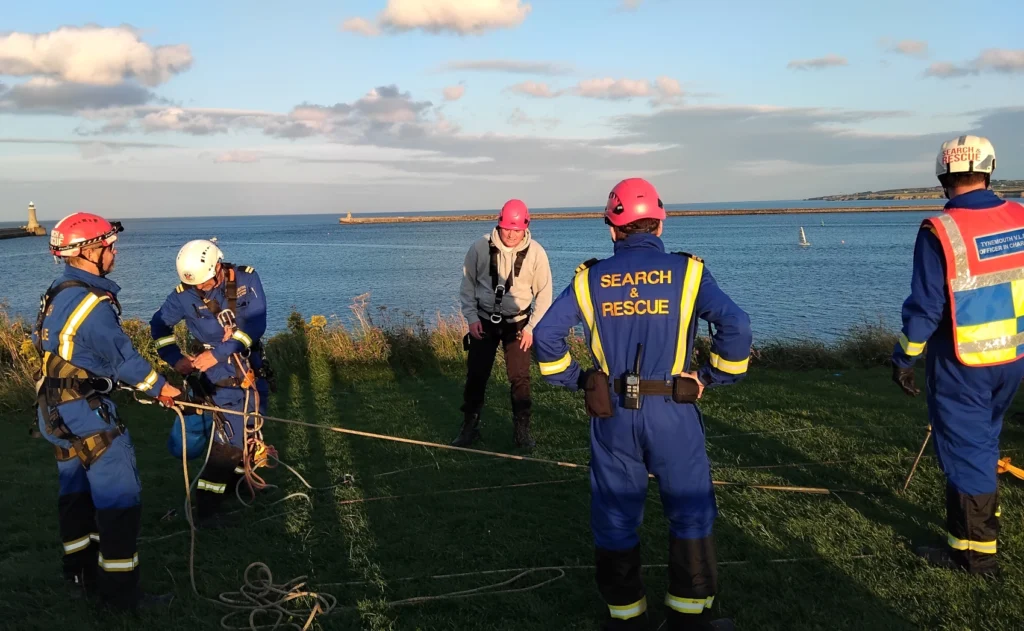
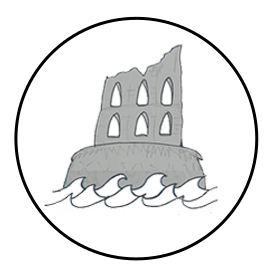




Great write up. Thanks for joining in so enthusiastically! Hope to see you again some time. Jonny (TVLB)
Thanks a lot Jonny. You explained everything very clearly.